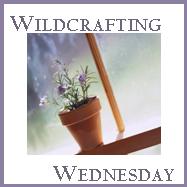Here are some tips for those of you in apartments, cities, shaded yards, suburbs with restrictive landscaping expectations or other challenges to your green thumb.
 |
| This shaded patch by the front door provided an entire season's worth of salads. I planted endive, landcress, and lettuce. Some dandelion poked through, but I let it grow since it was edible too. |
Plan to keep your garden plot working all season long. Early in the season, get some radishes, lettuce and spinach in. Once that's ready, it will be time for summer crops like tomatoes and peppers. Then as you take out the spent plants, get more lettuce, radishes, spinach and perhaps some kale in. Look for varieties that can withstand snow so you can go out in early winter, brush away the snow and dig out dinner.
 |
| By the time the harvest came in, the bean plants were 15 feet tall and grew to the top of the branches behind the trellis. The trellis is just a planted headboard I curb-shopped. |
 Use your space wisely. When planting lettuce, alternate lettuce seeds with radish seeds. Radishes will mature while the lettuce is still tiny and will be harvested before the lettuce needs the space. Plant lettuce, radishes, basil or carrots in between tomato plants to use otherwise wasted space. Grow vertical when you can to make the most of your square footage.
Use your space wisely. When planting lettuce, alternate lettuce seeds with radish seeds. Radishes will mature while the lettuce is still tiny and will be harvested before the lettuce needs the space. Plant lettuce, radishes, basil or carrots in between tomato plants to use otherwise wasted space. Grow vertical when you can to make the most of your square footage.Grow multi-purpose plants. Everyone knows you eat radish bulbs, but the leaves are also edible. Beet and carrot leaves are also edible. When choosing a bean variety, look for one that you can eat immature as a pod,
or as a dry bean (Scarlet runner beans are good for this, and they're beautiful!)
 |
| Who can say Romanesco Broccoli isn't beautiful? |
 |
| Salad made from thinnings from the outdoor radish and carrot beds and from the indoor lettuce pots. |
Eat your thinnings. If you have to thin radish, carrot, beat or lettuce, make a salad out of the tiny veggies.
 |
| A sunny window is the perfect place to grow some lettuce for winter salads. |

 If you have a small patio or balcony that gets a bit of sunlight, you are in luck. A lot of great vegetables and fruits can be grown in containers. I've grown tomatoes, peppers, cucumbers, lettuce, onions, radishes, cucumbers, and more in containers in the patio at my old apartment. The south-facing patio got just enough sunlight. I salvaged food-grade buckets from my job at a restaurant for many of the plantings, and used small trash cans that I bought for less than a dollar at a thrift store.
If you have a small patio or balcony that gets a bit of sunlight, you are in luck. A lot of great vegetables and fruits can be grown in containers. I've grown tomatoes, peppers, cucumbers, lettuce, onions, radishes, cucumbers, and more in containers in the patio at my old apartment. The south-facing patio got just enough sunlight. I salvaged food-grade buckets from my job at a restaurant for many of the plantings, and used small trash cans that I bought for less than a dollar at a thrift store.If you have no yard, no balcony/patio/porch, and no sunny windows, you can still grow a bit of food: sprouts. Get lentils, mung beans, or other beans/seeds, soak for 8 hours in water, then drain, rinse and place in a cupboard. Once or twice a day, rinse and drain well. Soon you'll have delicious sprouts to add to sandwiches, salads or stir-fry. It's an easy and cheap way to grow a little food.
Pick wild foods in your area. Dandelion leaves are a deliciously bitter green for salads or steamed to use like spinach, the flowers make incredible fritters or jelly and the roots make a delicious coffee substitute. Violet flowers and leaves are great additions to salads. Red clover flowers make a nice tea. I find lots of edibles growing in the heart of the city, and I take full advantage of them. Fruit trees left over from a more self-reliant time are still dotting the city landscape. Look for mulberries, crab apples (use in jelly or add to other apples when juicing for a bit of zing), and pears growing along parking lot edges or hanging over sidewalks.
Guerilla garden. If you cannot find a place that you are allowed to grow some food, look for a place that you can grow food without anyone noticing. Abandoned lots and empty planters (such a depressing sight!) beg for some green beauty. Take over the flower beds that your landlord has long since stopped planting. A sprinkling of lettuce seeds are easy enough to plant without anyone noticing.
Shared on:



http://realfoodforlessmoney.com/simple-lives-thursday-175/



I love posts like this one. I live on a city lot and I'm always amazed at the vegetables and fruit our backyard produces. We're growing more veggies and less flowers these days. :-)
ReplyDeleteMany people I know are growing their own vegetables and herbs now. I finally decided to start my own window garden and it's exciting to see sprouts coming up for our mint plant.
ReplyDelete